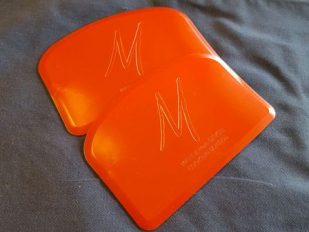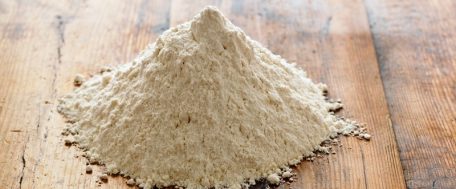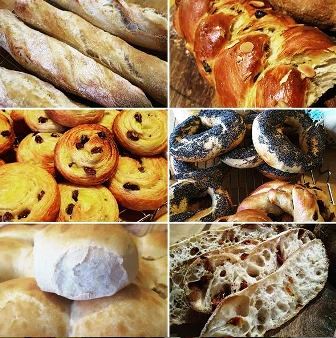Our Top Ten Dough and Bread FAQs
Since the lockdown we’ve had an increasing number of people contacting us with bread related questions. Some have recurring themes so we thought it might be useful if we collected together the answers to some of the most popular questions. Let us know if you have any other questions and we can add them to the mix.

The bread doctor is in!
The supermarkets are out of dried yeast so I am using fresh yeast – how much do I use compared to the normal dried yeast I use?
Use twice the amount of fresh yeast compared to dried – so if a recipe calls for 10g of dried yeast, you need to use 20g of fresh yeast
I got a block of fresh yeast from the bakers – there’s too much to use; what can I do with it?
Fresh least should last 2 – 3 weeks but if you only bake once or twice a week you’ll definitely have some hanging about for too long. The best thing to do is to cut it into 20g pieces, wrap them indvidually in clingfilm and then freeze them. To use them, just take them out of the freezer and dissolve the frozen yeast (withouth the clingfilm) in tepid/warm water and you can use it straightaway. Don’t defrost it and then use it as it becomes really messy!
What essential equipment do I need?

Essential Dough Scrapers
We would say 2 or 3 plastic bowls, 1 larger than the others. We would use the large one for proving dough and use one of the smaller ones inverted to sit in the larger bowl and act as a lid. Also a good apron as you’ll get floury – how about one of ours??! (see above) And also a couple of dough scrapers – excellent for mixing soft doughs and for scraping any leftovers off your work surface. We also recommend a probe thermometer so you can check that your bread has reached that crucial 95C of being cooked. And a set of electronic scales so you can accurately weigh flour, salt, yeast and water – we gave up measuring jugs for milk and water ages ago; much easier to weigh them as 1ml =1g so if you’re recipe says 500ml water or milk just weigh out 500g of it.
I can’t get any strong flour – can I use regular plain flour to make bread?

Stuffed parathas
You can – why not make a soda bread which is quick and easy to make. Try this recipe. Flatbreads like rotis and parathas can also be made with plain flour.
Can I freeze bread?
Yes you definitely can. We put ours in a clean plastic shopping bag, seal the top with a plastic clip and then put it in the freezer. Freezing will age the bread a little but it’s still fine once it’s defrosted; also great for toast.
I’m making bread but we don’t eat very much – I don’t want to waste it though
You can slice the bread and then freeze as above. When you need the bread, just take out however many slices you need from the freezer.
Can I freeze dough – if I’ve made too much for pizza say??
Yes you can; just wrap each pizza ball in clingfilm and then freeze the ball individually. When you want them, take them out and let them defrost and come to room temperature and use them as you would do normally. This a great time saver if you want to make something a bit involved like pain au raisin. Make a big batch when you have time. After you’ve shaped them freeze the raw dough in sets of 4 or 6. Take a set out the night before you need them. Leave at room temperature and bake ready for breakfast.
There are only two of us and it takes us age to get through a loaf. What’s the best way to keep bread?
Keep your loaf in a bread bin not in the fridge as that will stale your bread. Cover the cut end of the dough with beeswax film to stop dehydration. Keep the bread bin in a cooler part of your kitchen, not in a sunny window. If you’re making your own bread try fermenting it for longer at a cooler temperature during the first rise. This will give the starches more time to absorb moisture and help it keep for longer.

Is my house too cold to make bread?
Not at all – yeast works between and 5C and 55C; it will just work slower at lower temperatures. In winter you may need to give the yeast a chance by putting the dough in a warm spot, a sunny window sill or near a radiator but longer fermented bread tastes better, is easier to digest and will keep better than bread made quickly.
What can I do with bread that’s getting on a bit?
Ooh lots! How about –
- cheese on toast or the posh version, croque monsieur
- make fresh or dried breadcrumbs (freeze the fresh ones and keep the dried ones in a jar in the cupboard). To dry them, whizz up your old bread in a food processor, put the crumbs in a baking tray and put them in a cool oven to dry out, turning the crumbs from time to time. We leave them overnight in a cool wood fired oven or on about 90C in a regular oven until they are dry – open the door from time to time to let out moisture. You can then whizz them again in the food processor and sieve them to make them really fine but frankly, life’s too short…!
- make croutons to have on soups and salads
- make bread and butter pudding, sweet and savoury
- make toasties or fried cheese sandwiches
- make your own stuffing for roast dinners
- make brown bread ice cream
- make panzanella – Italian tomato, basil and bread salad
Hope that helps
Let us know if you have any other questions
Happy cooking

Happy breadmaking!

